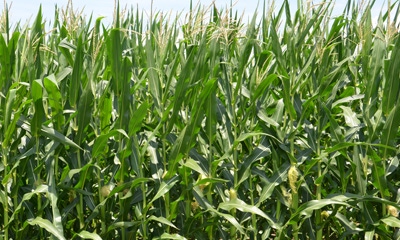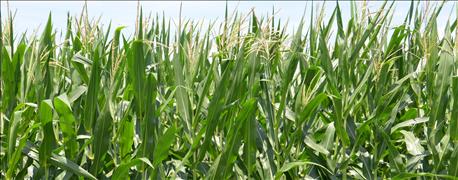July 15, 2016

In many areas, early-planted corn has started to pollinate. This is a great time to make a late evaluation of your corn crop. The No. 1 thing to look for is leaf disease. Disease pressure across southern Indiana has been low, even though the weather has been good for gray leaf spot development. For the most part, it's been too hot for northern corn leaf blight. My biggest concerns for fungicide applications right now are bottomland fields, corn-after-corn fields and later-planted corn.
Here are five specific things to watch for this week:
1. We still need to scout for insects.

WATCH SILK DEVELOPMENT: Silk clipping can occur during this time of year. Japanese beetles and corn rootworm beetles are likely responsible. Keep a close eye on potential silk clipping.
We need to look at silk feeding. If silks are damaged, we run the risk of pollination not happening or being reduced. Corn rootworm beetles and Japanese beetles are normally the main culprits. I have also seen a little European corn borer damage. They are much more difficult to spray and control. For corn borer control, we need to spray when the larvae hatch from the egg masses on the underside of the leaf, before they enter the plant. Once inside the stalk, we will be unable to control them effectively.
2. The recent storms have given nearly everyone some down corn.
Even corn with a great root structure can’t handle 50-mph-plus winds when the ground is wet. The wet soil becomes loose, and the roots have nothing to hold on to. The good news is, unless stalks completely break off, most corn will recover before pollination starts, and should be just fine.
3. In soybeans, watch for phytophthora root and stem rot.
I've seen random plants that last week looked healthy and today are dying. Fungicides do not control this disease, and we have had the perfect storm of weather for it to thrive. Seed treatments and soybeans with good tolerance are the best defense for early infections.
4. Some soybean fields are starting to turn yellow in certain areas.
In some cases, soils have stayed saturated and hot. This is slowing root growth and nodulation, causing soybeans to turn yellow and be stunted. Soybeans, and especially soybean roots, do not handle hot soil temperatures very well this time of year.
5. Soybean cyst nematode pressure is also out there.
Areas affected by soybean cyst nematode are random and normally show up in patches. They are worse when soybeans are under additional stress, such as too much moisture or drought. If you suspect SCN, pulling a soil test to check for them is the best way to know what type you have. Planting soybeans tolerant to that type of nematode is your best defense.
Gauck is a team sales agronomist for Beck’s. He writes from Decatur County.
You May Also Like




